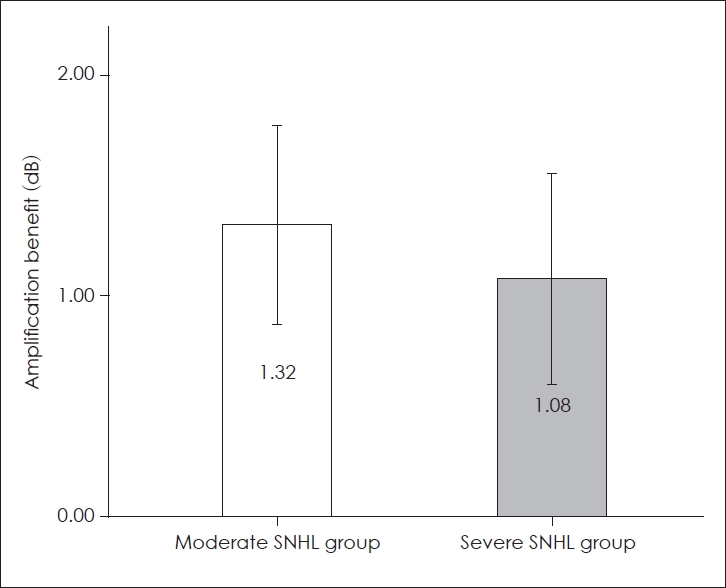1. Ching TY, Dillon H. A brief overview of factors affecting speech intelligibility of people with hearing loss: implications for amplification. Am J Audiol 2013;22:306ŌĆō9.


2. Moore BC. A review of the perceptual effects of hearing loss for frequencies above 3 kHz. Int J Audiol 2016;55:707ŌĆō14.


4. Houtgast T, Festen JM. On the auditory and cognitive functions that may explain an individualŌĆÖs elevation of the speech reception threshold in noise. Int J Audiol 2008;47:287ŌĆō95.


5. Taylor BB. Speech-in-noise tests: how and why to include them in your basic test battery. Hear J 2003;56:40ŌĆō3.

6. Smits C, Kapteyn TS, Houtgast T. Development and validation of an automatic speech-in-noise screening test by telephone. Int J Audiol 2004;43:15ŌĆō28.


8. Smits C, Theo Goverts S, Festen JM. The digits-in-noise test: assessing auditory speech recognition abilities in noise. J Acoust Soc Am 2013;133:1693ŌĆō706.


9. Jansen S, Luts H, Dejonckere P, van Wieringen A, Wouters J. Efficient hearing screening in noise-exposed listeners using the digit triplet test. Ear Hear 2013;34:773ŌĆō8.


10. Koole A, Nagtegaal AP, Homans NC, Hofman A, Baatenburg de Jong RJ, Goedegebure A. Using the digits-in-noise test to estimate age-related hearing loss. Ear Hear 2016;37:508ŌĆō13.


12. Dillon H. Hearing aids. 2nd ed. New York: Thieme;2012.
14. Schlauch RS, Nelson P. Puretone evaluation. editors. Handbook of clinical audiology. In: Katz J, Chasin M, English K, Hood LJ, Tillery KL. 7th ed. Philadelphia: Wolters Kluwer;2015. p.29ŌĆō47.
15. Ansari NN, Naghdi S, Hasson S, Valizadeh L, Jalaie S. Validation of a Mini-Mental State Examination (MMSE) for the Persian population: a pilot study. Appl Neuropsychol 2010;17:190ŌĆō5.


16. Scollie S, Glista D, Tenhaaf J, Dunn A, Malandrino A, Keene K, et al. Stimuli and normative data for detection of Ling-6 sounds in hearing level. Am J Audiol 2012;21:232ŌĆō41.


19. The American National Standards Institute. American National Standard: maximum permissible ambient noise levels for audiometric test rooms. ANSI/ASA S3.1-1999 (R2018). Melville, NY: Acoustical Society of America;2008.
20. Mahdavi ME, Pourbakht A, Parand A, Jalaie S, Rezaeian M, Moradiju E. Auditory recognition of words and digits in multitalker babble in learning-disabled children with dichotic listening deficit. Iran Red Crescent Med J 2017;19:e42817.

21. Heidari M, Mahdavi ME, Heidari F, Baghban AA. Auditory recognition of Persian digits in multi-talker babble noise: a preliminary study. Aud Vest Res 2015;24:134ŌĆō40.
23. Dawes P, Munro KJ. Auditory distraction and acclimatization to hearing aids. Ear Hear 2017;38:174ŌĆō83.


26. Desjardins JL, Doherty KA. The effect of hearing aid noise reduction on listening effort in hearing-impaired adults. Ear Hear 2014;35:600ŌĆō10.















